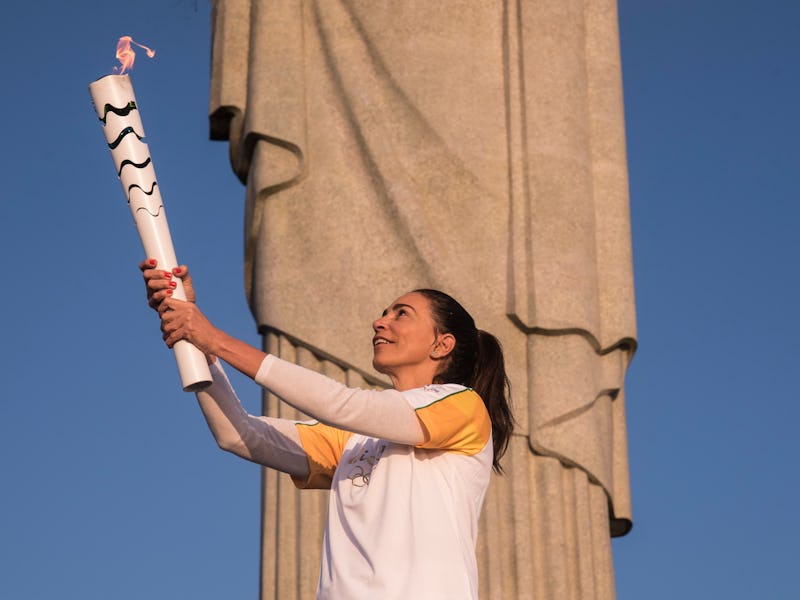That Olympic Torch Is Lit
It's the flame that keeps on going and going and going and going...

On Friday, the 2016 Olympics in Rio will kick off with fanfare, topping off a predictably pompous ceremony with the lighting of the Olympic torch that will fan its flames for the next few weeks. Through rain or snow or wind, the flame mysteriously keeps on flickering.
But how?
First things first: The Olympic torch and the Olympic flame are not the same thing. The Olympic flame dates back to ancient Greece, where it honored Hestia, the goddess of hearth and home. Fire has always had symbolic value to the ancient Greeks, since the god Prometheus signed on to have his guts ripped out daily by a giant eagle in order to bring fire to mankind (it was previously considered only fit for the gods). The ancient games, however, had no torch.
The modern torch tradition was started in 1936. The famous torch relay doesn’t actually have ancient roots, though. In advance of every Olympics, the torch is lit in the birthplace of the Games, in Olympia, Greece, complete with a formal ceremony involving lots of women dressed as virgins, whatever that looks like.
The torch is lit by using a mirror to refract the rays of the sun. (Back in the day, ancient Greeks would help the process along with some oil.) The idea is that the flame is not supposed to die, with the Olympia flame acting as a sort of original source of fire. Once lit, the torch begins its arduous journey to wherever the Olympics happen to be taking place, stubbornly staying lit the entire time.
So what happens if it goes out?
In 1976, rain did in fact briefly extinguish the flame in Montreal. In such cases, the flame can be reignited with another “original” flame from Olympia. Flames that are lit at the rehearsal are in fact brought along in miner-style safety lamps in case a backup is needed.
There’s a new torch for each Games, and the design changes every Games. For the 2000 Sydney games, it had to be placed in a special waterproof, compressed chamber in order to visit the Great Barrier Reef. Each is crafted from recycled aluminum and resin and given a satin finish; they’re typically tested in wind tunnels before game time. In 1956, final runner Ron Clarke introduced a flame that was supplemented with magnesium and aluminum flakes that helped make it more visible.
In recent years, there’s been an emphasis on making the flame as environmentally conscious as possible. Rio’s torch arrived in Brazil in April.